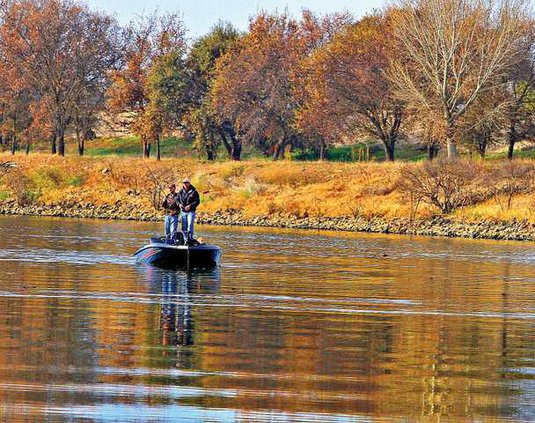LATHROP — A temporary rock barrier on the Old River west of Lathrop could mean improved water supplies for farming and urban uses as well as improved conditions for salmon and steelhead.
The barrier advanced by the federal and state governments is a compromise between government agencies, water contractors and environmentalists.
“It’s a good move,” said South San Joaquin Irrigation District Manager Jeff Shields. “The SSJID made the recommendation to do just that two years ago.”
The SSJID along with the Oakdale Irrigation District has been waging a campaign for the past several years dubbed “Save the Stanislaus”. The two agencies have repeatedly pointed out what they believed to be ineffective management policies proposed for the Stanislaus River as well as the Delta that would have minimal or negative impacts on efforts to enhance salmon and steelhead fish populations.
The barrier is intended to save more juvenile salmon and steelhead from being killed by powerful pumps as they swim toward the ocean. It will be installed at the head of Old River for only two months this year — in April and May — a peak time for fish migration.
The barrier could also potentially increase the amount of water exports, by permitting a broader range of “negative flows” in the Old and Middle River downstream of the pumps. The pumps cause these tributaries to reverse direction, which environmentalists say harms the fish.
In September, U.S. District Judge Oliver Wanger in Fresno invalidated parts of the U.S. National Marine Fisheries Service’s so-called biological opinion, a river management plan to help the fish. The judge said some of the agency’s analyses relied on “equivocal or bad science” and didn’t clearly demonstrate why the measures it imposed were essential.
But the judge still ruled that the pumping operations that bring water to farmers and urban users negatively impact fish habitat.
Wanger threw out the previous salmon and steelhead management plan in 2008, which led the government to release the new proposal a year later. California water contractors again challenged it in court.
Thursday’s announcement is an out-of-court agreement among the National Marine Fisheries Service, the California Department of Water Resources and the state’s major water contractors. The agreement must still be approved by a judge.
The agreement also calls for building a life cycle model for the fish and broadening acoustic tagging of juvenile salmon and steelhead to gather more precise information on migratory patterns and fish survival in the delta, among other measures.
While the agreement is a small step with limited impact, officials said, it will head off more litigation and improve scientific understanding of the issues.
Environmental groups have not signed the agreement, but said they won’t oppose it.
“This is a pretty significant development, although we still don’t know how it will play out,” said Earthjustice attorney Erin Tobin, whose group is involved in the litigation.
Overall survival of Chinook salmon swimming through the Delta to the ocean has been in decline for the past three decades, from a high of 79% in 1995 to less than 20% since 2001, and less than 10% in recent years.
The government must develop a new management plan to help the fish by February 2016.
Temp barrier on Old River will help salmon, steelhead in San Joaquin River





